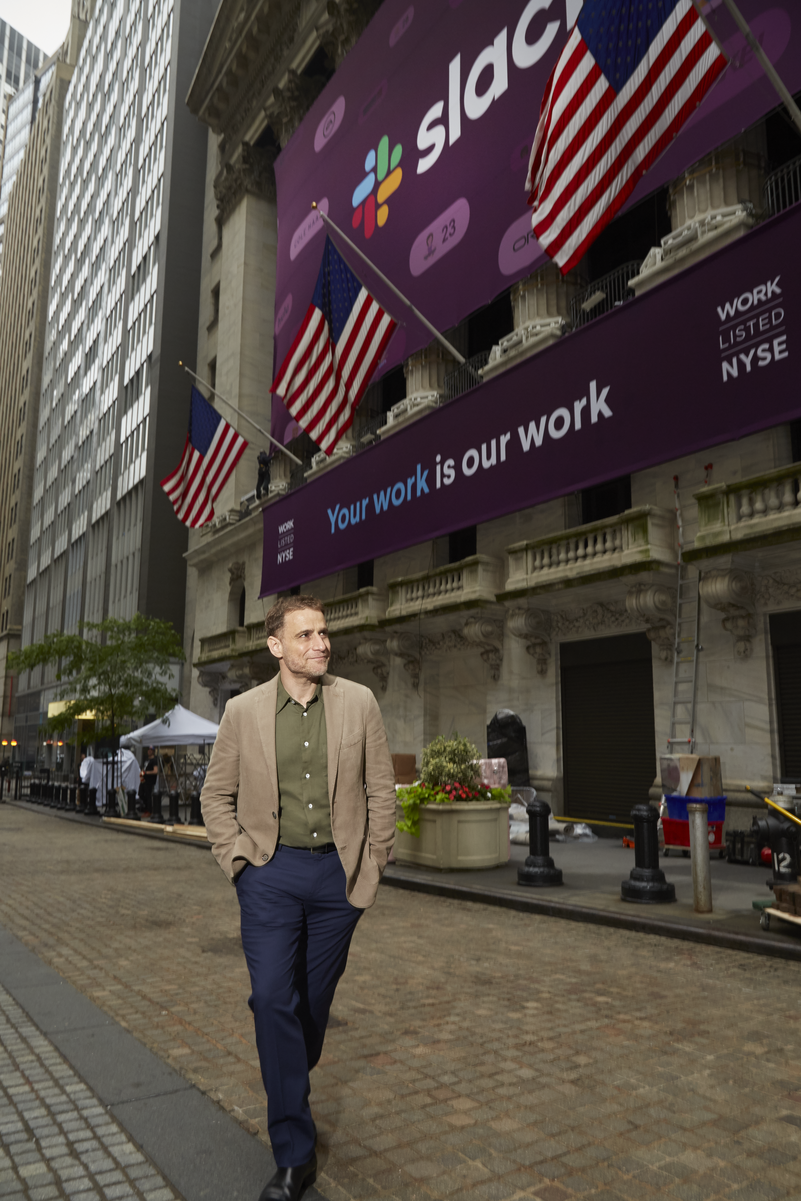3 Under-the-Radar Stories in the Stock Market This Week
By definition, if you're trying to beat the market, you need to develop a variant perception. In order to do this, you need to focus on situations or information that the consensus view is under-weighting or ignoring altogether.
This week, we highlight a weakness in Amazon.com's (NASDAQ: AMZN) formidable economic moat; the economics of the handheld calculator industry; and how familiarity bias can create opportunity in the shares of business-to-business technology companies, including those of recently listed Slack Technologies (NYSE: WORK).

Image source: Getty Images.
Amazon's user experience: Small cracks
The market's consensus view appears to be that Amazon is an unstoppable juggernaut: With shares sold short representing fewer than 1% of the equity float, Amazon's short interest ranks among the bottom 20 stocks in the S&P 500, according to data from Bloomberg. But while its commitment to customer satisfaction and its command of logistics and technology in pursuit of that goal are awe-inspiring, Amazon has developed some cracks in its much-admired "user experience."
Have you ever been discouraged (or defeated) by the infinite, chaotic assemblage of product/seller choices when you search for a specific product? I certainly have -- Amazon's Marketplace is more of a souk sometimes. And when I went shopping for batteries and electronics accessories on Amazon, it quickly became evident that a significant proportion of third-party sellers on the site are trying to fob customers with counterfeit merchandise. (I gave up on the batteries.)
Which brings me to a fantastic in-depth article, in which The New York Times asks, "What happens after Amazon's domination is complete?" and looks for clues in Amazon's original business, selling books online. The result isn't always pretty, with examples of fraud, counterfeits, and intellectual property theft that are each one more outrageous (or absurd) than the last:
Those who write a popular book open themselves up to being "summarized" on Amazon. At least eight books purport to summarize "Bad Blood," John Carreyrou's best-selling account of fraud in Silicon Valley. The popular novel "Where the Crawdads Sing" has at least seven summaries. "Discover a beautiful coming-of-age story without all of the unnecessary information included in the actual novel!" says one that has 19 five-star reviews, all of which read as if they were fake.
Unfortunately, Amazon's response "has been reactive rather than proactive in dealing with the issue." Given Amazon's market position, that leaves some sellers with little choice other than to integrate more closely with the behemoth in order to address the problem.
What does this all mean for investors? In the short term, counterfeit products are third-party sellers' problem -- Amazon takes its percentage from every purchase, regardless of whether the product is legitimate or not (though the company does provide for customer refunds under its "A-to-Z Guarantee").
Ultimately, however, the proliferation of counterfeit items degrades the customer experience, and that's a very real problem for Amazon, which set itself an early goal of "build the world's most customer-centric company."
The first step in addressing a problem is recognizing you have a problem, so it's encouraging to see that Amazon added the selling of counterfeit goods (and other illicit acts) as a risk factor to the "Risk Factors" section of its annual report for the first time this year.
But while it appears to emphasize the potential cost of refunds, it alludes only grudgingly to what I consider to be the greater risk: "[T]o the extent any [unlawful activities perpetrated by sellers] occurs, it could harm our business or damage our reputation..."
I think Amazon is an outstanding company; my Prime membership just renewed this month and I was happy to pony up the subscription fee -- the program offers superb value. But I don't think the company is somehow invulnerable or infallible. Or as CEO Jeff Bezos himself warned his employees last November: "Amazon is not too big to fail; in fact, I predict one day Amazon will fail. Amazon will go bankrupt. If you look at large companies, their life spans tend to be 30-plus years, not a hundred-plus years."
Calculators: The great deflation

Image source: Texas Instruments Incorporated.
The Wall Street Journal's daily "Markets" email pointed me to a bit of business trivia: Tuesday was the 45th anniversary of Texas Instruments' (NASDAQ: TXN) receipt of a patent for its "miniature electronic calculator" (you'll find a picture of the prototype here).The history of TI's calculators illustrates some useful lessons in business, economics, and investing.
The company's first consumer handheld calculator, the TI-2500 Datamath, was launched in September 1972 at a price of $119.95 (equivalent to $730 today). Today I found a Texas Instruments scientific calculator that retails at Best Buy for $15.99. In other words, the price of an entry-level TI calculator has fallen by 87% since it was first introduced -- an annualized deflation rate of more than 4%! (Not to mention that the original TI calculator could perform only four operations: addition, subtraction, multiplication, and division.)
In an economy in which the long-term trend for the general price level increases relentlessly, TI sold and continues to sell a product, the price of which fell dramatically. That decline caused a brutal shakeout during the mid-1970s, whittling down the number of calculator manufacturers from two to three hundred to only a handful and greatly improving the economics of what ultimately became a nicely profitable industry.
Incidentally, Texas Instruments, which designs and manufactures semiconductors, turned into a superb long-term investment: Over the 30-year period ending May 31, the stock has produced roughly a 65-fold total return against just 14-fold for the S&P 500 (or 15.2% versus 9.5%, on an annualized basis), according to data from Bloomberg.
Under-the-radar business technology shares are over-delivering

Image Source: Slack Technologies Inc.
Last Thursday, business collaboration software provider Slack Technologies (NYSE: WORK) completed its share offering in a successful debut that saw the stock jump 49%, adding supporting evidence to a trend that the Wall Street Journal highlighted the following day [subscription required]:
Even as consumer-facing companies [form] a mixed group of IPOs ... [i]t's a simpler story for so-called enterprise technology companies like Slack ... Investors and analysts say one of the draws for Slack ... and other enterprise technology companies is recurring revenues. That enables Wall Street to forecast future profits more accurately and reduces the cost of customer acquisition and increases their staying power.
Regarding the cost of customer acquisition, advisory firm Theta Equity Partners estimates that Slack spends an average of $7,700 to acquire each new customer. Divide that by an estimated customer lifetime value of $99,000 and the company is earning a phenomenal marketing return on investment of more than 1,200%! The equivalent figure for ridesharing platform Lyft is just below 60%.
The stability and "staying power" (read: competitive advantage) the Journal refers to is the reason leveraged buyout firms are happy to make large acquisitions in the information technology/business services industries, while generally steering well clear of consumer technology companies.
But not all investors are aware of these characteristics, which creates the potential for a systematic mis-pricing in the stock market. Indeed, everyone and their uncle has -- and is quick to share -- an opinion on Apple, both the business and the stock. But ask them instead what they think of Cisco Systems or Oracle and your interlocutor is likely to turn mute, despite the fact that these are (roughly) $200 billion companies. The reason isn't mysterious: The latter two companies cater to other businesses rather than consumers such that the vast majority of people don't know the first thing about their products. By contrast, most everyone has had firsthand experience with an iPhone -- literally.
Slack Technologies is an example of a situation in which investors appear not to fully appreciate the attractiveness of the unit economics, and, as such, it's not too late to buy the stock, even after its "pop."
More From The Motley Fool
John Mackey, CEO of Whole Foods Market, an Amazon subsidiary, is a member of The Motley Fool’s board of directors. Alex Dumortier, CFA has no position in any of the stocks mentioned. The Motley Fool owns shares of and recommends Amazon and Apple. The Motley Fool owns shares of Texas Instruments and has the following options: long January 2020 $150 calls on Apple and short January 2020 $155 calls on Apple. The Motley Fool has a disclosure policy.
